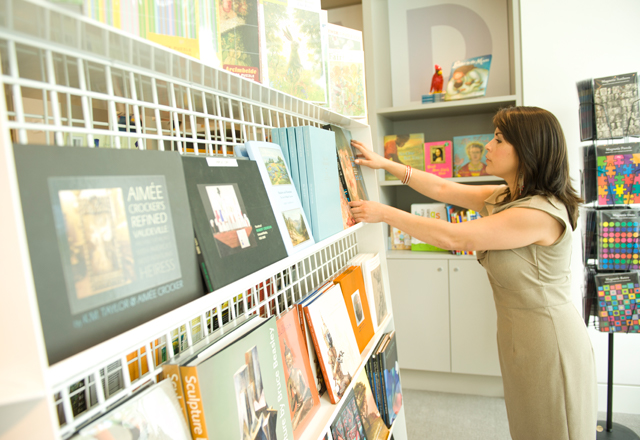The retail ideal of putting customers’ desires first often comes into conflict with the plain truth about inventory: While most customers enjoy making selections from a fully stocked store, retailers just can’t afford to carry stock that appeals to everyone who walks through the door. Even specialty stores, which have more limited inventory by their very natures, need to be selective so they don’t give shelf space to slow movers at the expense of products that are hot tickets.
Moving to a larger space is one potential solution, but opening a warehouse-sized store has considerable real estate costs attached. The ability to offer vast selection economically is one area in which e-commerce has a distinct advantage. But does that have to be? Here’s how one footwear maker thought to look outside the (shoe) box.
Athletic shoes are the mainstay of Adidas’ $16.3 billion business. A couple of years ago, the German-based company realized that while it was impossible for any of its retailers to carry a full selection of Adidas shoes, it was losing sales simply because shoppers were unaware of all the offerings available. Of course, customers could purchase online, but many didn’t because of their desire to try on shoes before purchase.
Adidas came upon a hybrid approach that would let customers enjoy a personalized sales approach, while boosting sales of athletic shoes. The company implemented an Intel technology-based interactive video wall to launch a line of specialty Olympic sports shoes, most of which were not physically carried in stores, due to inventory risk. The wall was installed in various locations, and has been responsible for increases in footwear sales of more than 40 percent in every instance so far, according to Adidas. Read that again: Every instance. Such an impact on sales is not trivial.
The reason for the success is straight-forward. The technology let customers see images of the shoes from different angles, learn their features, select sizes and colors, check inventory, and purchase the shoes. And that’s all done at the digital display.
It might seem easy to reduce the interaction between customer and shopper using this technology, but that’s not necessarily the case — it simply depends on the intent. If a retailer is aiming for a self-service model, an Adidas-like solution will fit the bill. But it can also add to the customer-associate relationship, as Adidas found. The system added a point of interaction for the associate to help involve the customer by explaining how the wall works and pointing out the innovative features, such as 3D rendering and social interaction. In addition, it provided an “endless aisle” of product for customers, who could search a complete inventory of thousands of shoes using the video wall, while the retailer could carry far fewer shoes in-store.
Understanding what the customer wants (large selection) and answering that desire (endless aisle solutions) offers a positive shopping experience that will inspire many to become loyal shoppers. While this type of solution is not be specifically tailored for an individual, it provides customization based on an individual’s preference, over and over. In that way, many customers can enjoy personalized experiences, without providing much personal data. A win for the customer, as well as the retailer.








